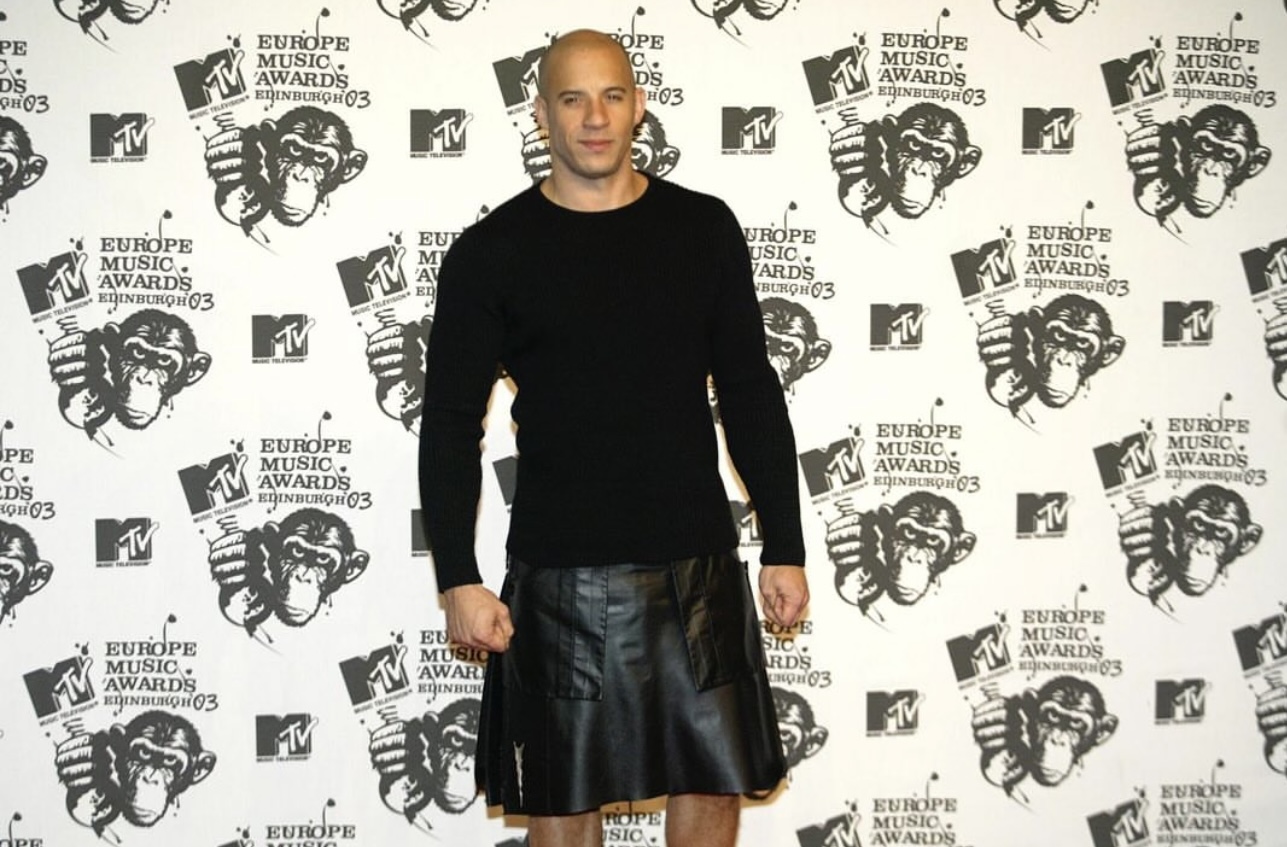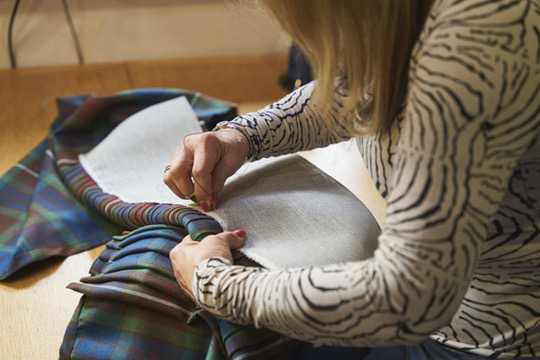If hearing “kilt” conjures images of a lack of underwear and an overconsumption of Irn-Bru, think again.

Kilts are a cornerstone of Scottish identity, steeped in heritage. But for Howie Nicholsby of 21st Century Kilts, they’re more than a relic of the past. Determined to reimagine the garment, Howie has turned the kilt into a fashion-forward garment—balancing tradition with modernity. From bold leather designs worn by some of your favourite Hollywood household names to everyday streetwear, his creations challenge rigid perceptions of what kilts can be.

Origins of 21st Century Kilts
For Howie Nicholsby, kilt-making was almost inevitable. Raised around kilts in his family’s business, Geoffrey Tailor & Kilt makers, he developed an early passion for the craft.
“My journey to America doing Scottish festivals started in 1983 when I was five years old, by 1984 I had a box to stand on and I was in charge of selling the socks and the garter flashes!”
In 1996, he launched 21st Century Kilts with one goal;
“I wanted it to be more for everyone, as opposed to just Scottish people. The kilt is the garment; tartan is the fabric, and there’s no law that a kilt HAS to be tartan.”
This vision set exceptional foundations for a brand that continues to challenge traditional perceptions and position the kilt as a versatile, contemporary fashion statement.

Heritage: Balancing Tradition with Modernity
For Howie, the biggest threat to the kilt industry isn’t modernisation – its cheap, mass-produced imitations.
“It’s in danger of being seen as a novelty garment, and that’s where I get really upset… We get emails from Pakistan trying to sell us it [kilt imitations] every day … its pretty horrible.”
Howie’s frustration reflects the wider challenge of balancing authenticity with affordability. His solution? Prioritising quality design to modernise the kilt without sacrificing its roots.
Cream socks, Howie explains, are a prime example of modern misconceptions;
“White socks were made up by English TV producers who couldn’t see the dancers’ legs on black-and-white film,” he explains. “Pipe bands lost their budgets and couldn’t afford tartan socks. The military wore white spats that could look like white socks, but if you look at the portrait galleries, there were never white socks.”
By eliminating outdated gimmicks, Nicholsby transforms kilts into practical garments rooted in authenticity.

The Modern Kilt as Streetwear
21st Century Kilts isn’t just about preserving heritage – its making kilts wearable everywhere, from weddings to Waitrose! With pockets, leather trims and poly-wool fabrics, Howie’s designs work for both formal events and everyday life.
“The modernity is more about how you wear a kilt apposed to even how the kilt is made,”
he explains.
“The more people who wear kilts the better, on a daily-day basis of creating a reality where men have a viable masculine option, where women can walk into a department store and choose skirt, dress, trousers, jacket and have it all matching, a man, I would hope generationally would be able to see a kilt as more than just a heritage piece and it does become an everyday streetwear garment that can be worn formally.”
Crafting a 21st Century Kilt
The Leather Kilt: A ‘Holy Grail’ of Design
21st Century Kilts’ leather designs, including one famously worn by Vin Diesel, are bold examples of Howie Nicholsby’s modern approach.
“Well, it was my own personal kilt that Vin Diesel wore,” Nicholsby explains. “I took it to LA—I was at a fashion show called ‘Dress to Kilt,’ and his stylist was working in the show, styling him for the MTV Awards in Edinburgh.”
The six-meter black leather kilt, complete with pockets, made a statement – and Diesel kept it!
“the designs one thing, but actually physically getting a tailor kiltmaker to make the leather kilt that’s the artist. I am more the mediator, and the artisan is the kiltmaker.”
Leather kilts, which start at around £3,500, are luxury items Howie dubs “the holy grail.”
“a normal hand sewn eight-yard kilt … is £1000… It should be more than £3000 a leather kilt but you kind of don’t want to put people off completely, there’s only so much profit you need to make, but you do need to make profit in business, profit is not a dirty word!”
Howie also highlights the hidden costs of quality kilt-making:
“Just the straps and buckles—and the inside canvas, lining and the threads—before you even start making a kilt and buying the eight yards of tartan, there’s £50 worth of sundries to make the kilt.”


The Kilt Pin: A Modern Symbol
Even smaller details, like 21st centuries custom kilt pin, balance tradition with modern design.
“The pin is a personal design. It started as a flag and then we inverted it… So, it was a circle, and very Celtic.”
While its purpose today is purely decorative, Nicholsby touches on its historical origins;
“In the Victorian period, it was meant to protect the man’s modesty by holding the kilt together—but that can rip the kilt”
(Photograph by Kylie Corwin)

Howie shares his observations on the growing international interest in kilts and offers insights into the future of 21st Century Kilts:
From its luxurious leather kilts to bespoke designs, 21st Century Kilts is redefining Scottish style—proving that tradition and modernity can no only coexist but thrive.
Shop 21st century kilts with Howie Nicholsby and John Webster at Geoffrey Tailor & Kilt Makers!
The Royal Mile
59 High St
Edinburgh
EH1 1SR
Leave a Reply